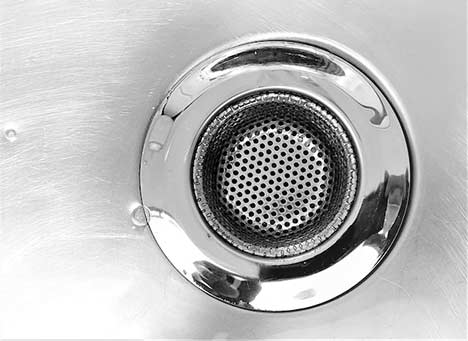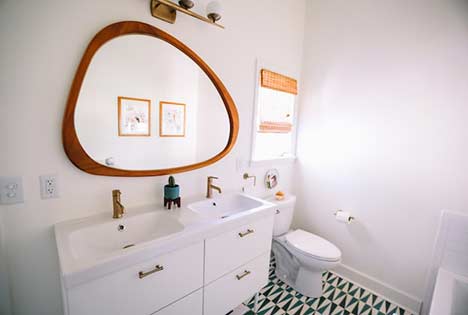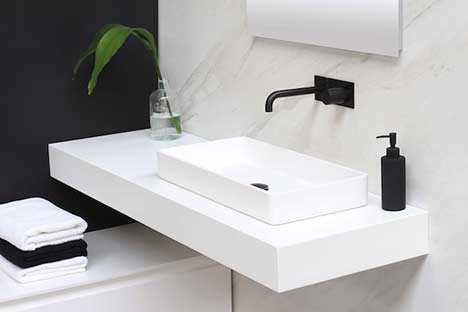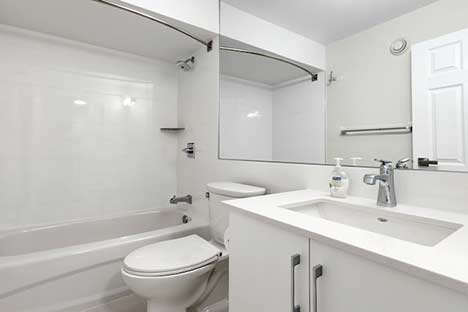If you’re tired of constantly dealing with rust stains around your sinks, toilets, and shower, it’s probably time to take action. We know that removing rust can be more than just an inconvenience. It causes damage to your fixtures and can even lead to more significant problems down the road. If you have a steel wool pad or Brillo pad in your home – or even if you don’t – these simple steps will help remove rust from your sinks and showers.
Pour white vinegar over the rust on your sink, toilet, and shower
Pour white vinegar over the rust on your sink, toilet, and shower. Vinegar is a great cleaning agent and will help remove rust. It’s also a natural product that doesn’t harm the environment.
- Rub the vinegar over the rust. You can use a soft cloth or an old toothbrush to rub it in.
- Leave the vinegar on for 15 minutes. Let it sit longer if you want, but 15 minutes is usually enough to loosen up the rust.
Wait about 15 minutes for the vinegar to penetrate
Don’t worry if your sink or toilet is stainless steel, as this won’t react with the vinegar. After 15 minutes, scrub with a sponge or abrasive pad to remove any leftover grime. Rinse the sink thoroughly and dry it with a towel. If you have a white sink, avoid using vinegar. Instead, use an equal amount of baking soda and water to clean the sink.

Cleaning the sink or toilet with vinegar
If you are moving in or out of the home and want to remove rust, try this method. Experts from Divine Moving and Storage suggest leaving your home clean before the move. This way, packing and transporting belongings becomes way easier.
Scrub the rust off with a kitchen brush
After letting the vinegar sit for a few minutes, it’s time to scrub. Use a kitchen brush to scrub away any remaining rust until you remove most of it. If you don’t have a kitchen brush, use steel wool or aluminum foil instead. If all else fails, there’s always the Brillo pad method:
- Fill a shallow bowl with warm water and pour in some white vinegar.
- Dip a Brillo pad into the solution, then rub it onto the cast iron skillet’s surface until you remove most of the rust.
- Rinse off the pan using warm water and dry it completely before storing it away in a cool, dry place.
Grab some steel wool, aluminum foil, or a Brillo pad
Scrubbing with steel wool or aluminum foil will work well on rust stains. However, be sure not to use these items on the ceramic surfaces of your sink. They will scratch it. The best way to remove rust from a sink or toilet is by using a pumice stone. That will help eliminate hard water stains and rust deposits on your porcelain surfaces. Another option is to use a commercial product to remove rust stains.

Be careful with ceramic surfaces
Scrub the area until most of the rust is gone
Scrub the affected area with a steel wool pad or Brillo pad. If you’re cleaning sinks, toilets and shower drains, use a wire hanger, metal spatula, or plumber’s snake. When scrubbing with a steel wool pad or Brillo pad, just apply pressure – don’t use too much force, as it will damage your sink’s finish. Let the area dry completely before using soap and water for final cleaning (or other methods). If you’re cleaning drains, use the wire hanger or plumber’s snake to push the debris down the drain. Flush with hot water after removing clogged particles.
Rinse and dry with a paper towel
Rinse and dry with a paper towel. Don’t use a cloth or rag, as this leaves lint behind and could potentially transfer bacteria or fibers from other fabrics. If the item is heavily soiled, you may want to use a small amount of detergent or soap. Be careful not to use too much, as this can leave residue behind on the fabric and make it harder for it to absorb water later.
Clear off any debris in the drain or on your sink before you remove rust
Once you’ve got everything prepared, here’s what to do:
- Clear off any debris in the drain or on your sink with a bent wire hanger, metal spatula, or plumber’s snake (if you’re cleaning a drain).
Pour 1/2 cup baking soda directly down the drain
1/2 cup baking soda will do the job this way:
- Pour the baking soda directly down your drain.
- Wait 20 minutes for it to do its thing.
- Flush the drain with hot water to remove any residue left behind, and shine things up a bit.
Stop up your sink and fill it with hot water
Stop up your sink and fill it with hot water. Use a magnet to collect any scraps and bits of scrap metal you accidentally picked up while removing the rust. If any pieces are too small or fragile for the magnet, just pour them down the drain after draining out your hot water.

Keeping hygiene is half of the work
Maintaining your sink is also essential during a detailed cleaning. For example, if you bought a new home, you want to make sure it’s spotless when moving in. Once you unpack, getting rid of unwanted bacteria from your sinks will be a good idea. You should remove any pieces of food or similar items from it and then fill them with hot water. In the end, don’t forget to sanitize your sink in the kitchen and bathroom.
You’ll need the right tools to remove rust from your fixtures
Removing rust from your fixtures can be easy if you have the right tools. First, remove your fixture from the wall and place it on a towel or piece of plastic. Turn off the water supply to prevent any water damage. Then, use a wire hanger or plumber’s snake to remove as much rust as possible. You may also want to try using steel wool or Brillo pads, but this can scratch glass surfaces, so be careful. Finally, some products might help loosen stubborn rust stains, but we recommend speaking with a local plumber before using them if possible.
In Conclusion
If you’re unsure how to remove rust from your fixtures, don’t worry. We got all the answers right here in this article – best of luck with it, and happy cleaning to you.
